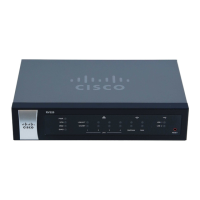9
Cisco RV320/RV325 Administration Guide 101
Certificate Management
A digital certificate certifies the ownership of a public key by the named subject of
the certificate. This allows others (relying parties) to rely upon signatures or
assertions made by the private key that corresponds to the public key that is
certified. In this model of trust relationships, a CA is a trusted third party that is
trusted by both the subject (owner) of the certificate and the party relying upon
the certificate. CAs are characteristic of many public key infrastructure (PKI)
schemes.
Use Certificate Management to to generate and install SSL certificates.
My Certificate
You can add up to 50 certificates by self-signing or third-party authorization. You
can also create certificates by using the Certificate Generator or import
certificates from a PC or USB device.
Self-signed SSL Certificates are not inherently trusted by browsers and while they
can be used for encryption they do cause browsers to display warning messages
informing the user that the certificate has not been issued by an entity the user has
chosen to trust.
A user can also connect without a certificate installed on the PC. The user sees a
security warning when connecting to the VPN tunnel, but can proceed without this
extra security protection.
To identify a certificate as the primary certificate, click the radio button of the
desired certificate and click Select as Primary Certificate.
To display certificate information, click the Details icon.
Exporting or Displaying a Certificate or Private Key
The client certificate enables the client to connect to the VPN. To export or display
a certificate or private key:

